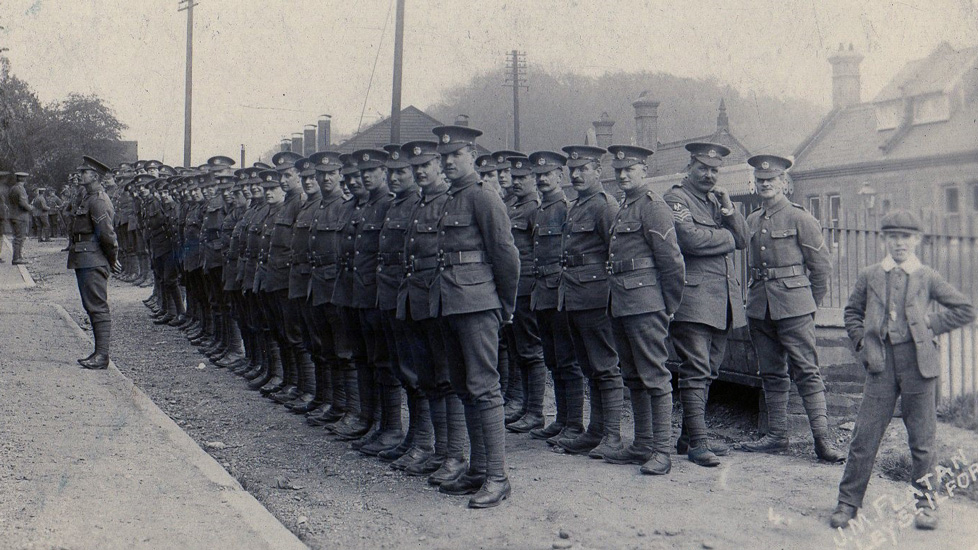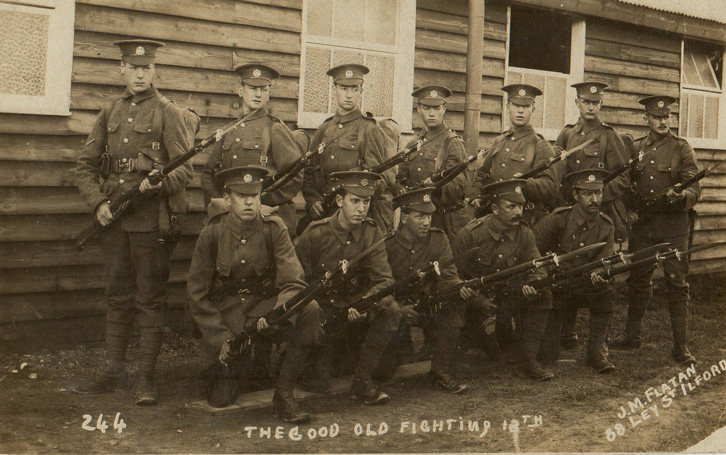
One hundred years on from their biggest battle of World War One, historian, author and Hammer Elliott Taylor recalls the courage of the West Ham Battalion...
Since the unveiling of the memorial to the West Ham Battalion at the Boleyn Ground in 2009, West Ham United has continued to show its dedication towards the Remembrance of those who died in the service of their nation.
This was most recently illustrated by the dedication of the new memorial to the Hammers Battalion at London Stadium, unveiled by Sir Trevor Brooking back in February at the match against West Bromwich Albion.
This month sees the centenary of the largest action the West Ham Pals were involved in during World War One.
During what became known as the Battle of Cambrai, the West Ham Battalion were again alongside their Brigade friends ‘The Footballers Battalion’ (made up of professional players) and facing the German front line ('The Hindenburg Line'), beside the small town of Mouevres.
The West Ham Battalion itself was split, on either side of the Canal Du Nord, with B Company on the right bank and D Company on the left. This canal was still under construction and empty of water, with the tile-lined sides being 30 feet high. The Germans were facing down the canal and so any effort to cross was met by a hail of machine-gun fire.
The Germans launched a sudden and unexpected assault on the British Line held by the West Ham Battalion during the early morning of 30 November 1917. The onslaught was so fierce and unrelenting that B Company was forced to make a hair-raising tactical withdrawal.
D Company, however, made a magnificent last stand at their Lock 5 position and even managed to capture more than a dozen Germans and took them prisoner. However, the rifle ammunition and grenades were starting to run worryingly low. Many men of D Company were killed, and the survivors quickly became aware that they were virtually surrounded. Captain Robinson, one of the original local volunteers from West Ham, duly shortened the Line and began a 'harassing action' with sniping to conserve ammunition.
Captain Robinson then held a meeting with the only other Officer capable of fighting, before informing the Company Sergeant Major Edwards and Platoon Sergeants that he had decided to continue resistance for as long as possible and hold their ground at all costs until relieved, as per their original orders.

Regardless of it being hopeless, the surviving men of D Company, on being given this news by their Sergeants, were in excellent spirits and in absolutely no mood to give up an inch of ground. They repaired the fire steps and reorganised themselves for all-round defence. Some were using the bodies of dead Germans as extra cover.
The resultant redoubt was immensely strong and easily defended. Yet the German hold on both sides of the canal was rapidly strengthening all around them. A call for two volunteers to attempt to get a message back to HQ was answered by Sgt Laurie Legg and one other man. As they set off into the maelstrom of grenades, pistol and rifle fire, snipers, sweeping Maxim machine guns, trench mortars and heavy artillery shells, I doubt many thought much for their chances.
Laurie Legg was an Original volunteer to the West Ham Battalion. Born in Leytonstone and growing up in Wathamstow, he lived at home with four sisters in Forest Road just before the Great War broke out. His Dad had been a piano tuner, but Laurie worked in the Docks as a shipping clerk.
Laurie volunteered in the West Ham Battalion very early on and served all through the battles of the Somme and Ancre in 1916, making the rank of Sergeant along the way. His old house was hit by a V1 in 1944, but you can see how it looked judging by the houses which remain in the street.
The German attacks on the British Line either side of the canal finally tailed off as night arrived. Both sides were completely exhausted but there was to be no 'Stand Down'.
As darkness fell, Lt-Col Walsh in the Hammers’ Battalion HQ dugout was feverishly trying to create a semblance of order out of the battlefield chaos.
Brigade HQ was also desperately trying to make contact and they were both asking the same question: where was D Company? Nothing had been heard of them since 10.20am that morning. At 8pm, they finally received their answer.
From in front of the West Ham lines crawled a mud-drenched and weary Sgt Laurie Legg. He immediately headed to Walsh at HQ and in the smoky and flickering light of the cramped, damp dugout Laurie’s report was heard in a wide-eyed hush.
He described the ‘Council of War’, held four hours earlier by the remaining Officers and NCOs, who were determined to fight to the last but were now surrounded and extremely low on ammunition.
Laurie’s effort to get this message through had been regarded as a ‘forlorn hope’ but, as military history has often witnessed, it succeeded. The news spread like an inspirational wildfire throughout the Hammers and to the whole Brigade.
Numerous signal flares were sent up to indicate to the survivors of D Company that Legg and his companion had made it through. Less than two dozen survivors were heard giving a hearty cheer. All through the night, violent attacks were made to reach the beleaguered men of D Company but, sadly, none of them were successful. Fighting continued for another three days before the stalemate of trench warfare settled down again.
Laurie was awarded the Military Medal for his incredible actions getting the message through and he received his ribbon and handshake on Christmas Day, 1917.
By February 1918 the West Ham Battalion was disbanded and Laurie was posted to another Battalion of the Essex Regiment, where he was killed on 12 April, 1918. He was just 24 years old and unmarried. Sadly, he has No Known Grave but today his name is remembered on the Memorial at Pozieres.
*Elliott Taylor is the author of Up The Hammers!: The West Ham Battalion in the Great War 1914-1918.